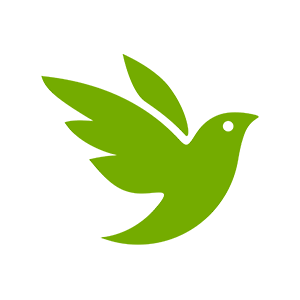NOTE - THIS IS STILL UNDER CONSTRUCTION
Part two in a series of posts on moth identification.
This post summarises the resources I find most useful for identifying moths in 1) Europe (including the UK), 2) Australia and 3) North America.
GENERAL
Web resources
There are several web resources which are likely to be useful tools regardless of the geographic area from which the moths comes.
1.  2.
2.  3.
3. 
4. 
EUROPE
Europe is in many ways easy. The fauna for most groups has been thoroughly described, so almost everything has a name. Particularly for the UK and northern Europe, there is a selection of excellent guides to larger moths and almost every family has a well-illustrated volume (or series of volumes) that provides all relevant information. The total cost for all this literature would be enormous, but there are several excellent web sites which provide good images and other information for most or all species and which may in many cases give a better idea of what the insects look like in real life.
Books
1.  2.
2.  3.
3. 
4. 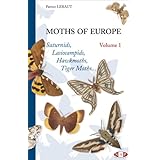 5.
5. 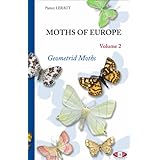 6.
6. 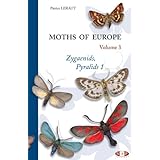
Depending on whether the focus is on the UK or other parts of Europe, I would recommend the following as excellent resources to get started.
The UK volumes (1, 2, 3) are more complete in their taxonomic coverage, so may be valuable for users across a much wider area of western or northern Europe (I find that the overlap with the Danish fauna is perhaps 90%) or even more widely. Note that 2 is a version of 1 that has all the paintings facing opposite a reduced text. All of these feature very good paintings of each moth, something which ensures easy comparison and a clear view of the key characters. 1 and 2 each cover all the "macrolepidopteran" families, which generally means larger species. 3 covers all the readily-identifiable British and Irish "microlepidoptera" in a similar format. Probably no other country in the world has such good books for identifying moths in the field.
The volumes of the Moths of Europe series (4, 5, 6) are rather expensive and so far only cover some groups (e.g. Noctuidae is not yet included) but already include an extraordinary number of species (these are available both in French and English). They are cheaper to buy directly from NAP Editions than from other online retailers.
Moving to more technical resources, there are several important but very expensive series series that also cover Europe as a whole. These include many images of preserved specimens and illustrations of genitalia. Noctuidae Europaeae (7) covers all of the Noctuidae/Erebidae/Micronoctuidae, the Arctiidae and the Lymantriidae in 13 volumes. The Geometrid Moths of Europe (8) will cover the Geometridae in 6 volumes, the first four of which have so far been published. Microlepidoptera of Europe (9) aims to cover all the "microlepidoptera" (basically the more primitive families, mostly comprising rather small moths) in around 20 volumes, with six already published. Pyraloidea of Europe (10) plans to cover the Pyralidae and Crambidae, with three volumes already published (with some taxonomic overlap with Microlepidoptera of Europe). All of these series are useful if you have access to them.
Two other single-family references that help to cover some of the remaining gaps are Tortricidae of Europe (11) in 2 volumes and Die Oecophoridae s. l. (Lepidoptera) Mitteleuropas (12).
Although they are in Swedish, the volumes of Nationalnyckeln (13) are intended to form a comprehensive encyclopedia of all Scandinavian plants and animals. The text includes English summaries for each species and, more importantly, very nice illustrated dual-language identification keys in Swedish and English. Three of the volumes so far published deal with moths (and one with butterflies). The volumes on Fjärilar: Käkmalar–säckspinnare / Lepidoptera: Micropterigidae–Psychidae and on Fjärilar: Bronsmalar–rullvingemalar / Lepidoptera: Roeslerstammiidae–Lyonetiidae are particularly worthwhile since these cover several micromoth families for which there is no other good modern European treatment. Coverage is only for part of northern Europe, but most British species, for example, are included. These books are rather inexpensive for what they represent.
There are many other books that address particular countries or regions or particular families or life stages within Europe. However these are the ones that I find myself actually using most often. In practice many questions can readily be resolves using the free web resources below, so only the most hardened enthusiasts are likely to need to dig into most of these volumes beyond the first few.
1. Waring, P., Townsend, M. and Lewington, R., Field Guide to the Moths of Great Britain and Ireland (only covers UK and Ireland)
2. Waring, P., Townsend, M. and Lewington, R., Concise Guide to the Moths of Great Britain and Ireland (only covers UK and Ireland, compact version of 1 above)
3. Sterling, P., Parsons, M. and Lewington, R., Field Guide to the Micro-Moths of Great Britain and Ireland (only covers UK and Ireland)
4. Leraut, P., Moths of Europe - Volume 1, Saturnids, Lasiocampids, Hawkmoths, Tiger Moths... (French and English editions)
5. Leraut, P., Moths of Europe - Volume 2, Geometrid Moths (French and English editions)
6. Leraut, P., Moths of Europe - Volume 3, Zygaenids, Pyralids 1 (French and English editions)
7. Fibiger, M. et al., Noctuidae Europaeae
8. Hausmann, A. et al., The Geometrid Moths of Europe
9. Huemer, P. , Karsholt, O. and Lyneborg, L., Microlepidoptera of Europe
10. Slamka, F., Pyraloidea of Europe
11. Razowski, J., Tortricidae of Europe (out of print)
12. Tokár, Z., Lvovsky A. and Huemer, P., Die Oecophoridae s.l. (Lepidoptera) Mitteleuropas Bestimmung - Verbreitung - Habitat - Bionomie (German)
13. Various, Nationalnyckeln till Sveriges Flora och Fauna (Swedish with English summaries and keys)
Web resources
1.  2.
2.  3.
3. 
AUSTRALIA
Books
.  2.
2.  3.
3. 
4.  5.
5.  6.
6. 
A significant proportion of Australian moths have never been described. There are many species that were named in the past using northern hemisphere genera and that are now recognised to need new genera to be created to include them. Many groups have not been revised for a century. More recent revisions are in many cases only to the level of the genus, with indications of already described species and numbers of known undescribed taxa. Becoming familar with this fauna has therefore been a significant challenge. I spent several years working alongside the Australian National Insect Collection, which made it possible for me to check known individuals of each species, but the gaps in the literature were a problem.
There are two useful volumes to get started with Australian moths. Moths of Australia (1) is the more comprehensive work. It is a technical reference with a short chapter on each family and 32 colour plates and 39 pages of black-and-white photographs showing a large number of representative species, mostly as pinned specimens. The species are well-selected and the book can be used to assign a very large proportion of specimens at least to genus or tribe. A Guide to Australian Moths (2) is a smaller book focused on photographs of live moths from each family. It complements Moths of Australia well and is particularly useful in showing the varied postures that moths adopt in different families or even within the same family, something that definitely assists with interpretation of images of pinned insects.
The booklets being produced as the Moths of Victoria (3, 4, 5, 6) series (each including a CD-ROM of additional text and images) are together starting to form something equivalent to a real field guide at least for Victoria and for the groups covered (currently including Anthelidae, Arctiidae, Bombycidae, Eupterotidae, Geometridae: Geometrinae, Geometridae: Larentiinae, Geometridae: Oenochrominae, Geometridae: Sterrhinae, Herminiidae, Lasiocampidae, Lymantriidae, Nolidae, Notodontidae, Oenosandridae, Saturniidae and Sphingidae).
The Monographs on Australian Lepidoptera (7) currently includes 11 volumes. Of these, one is a set of essays on various butterfly species and another is the Checklist of Australian Lepidoptera (now out-of-date given recent updates to the Australian Faunal Directory, which is accessible online). The remaining volumes cover the genus Fraus (Hepialidae, volume 1), the family Tineidae (generic level only, volume 2), the subfamily Oecophorinae (Oecophoridae, generic level only, volumes 3, 5 and 8), the subfamily Heliothinae (Noctuidae, volume 7), the tribe Artonini (Zygaenidae: Procridinae, volume 9), the subfamily Olethreutinae (Tortricidae, generic level only, volume 10) and the subfamily Elachistinae (Elachistidae, volume 11). All of these are useful, especially the volumes on the Oecophorinae which is a massive component in the Australian Lepidoptera. The volumes that only provide generic-level revisions contain many representative photographs and can be supplemented by web resources to check more species and to see which are commonly recorded.
Portraits of South Australian Geometrid Moths (8) is out of print and hard to find but provides comprehensive black-and-white photographs of all life stages for around 72 geometrid species.
1. Common, I.F.B., Moths of Australia (ONLY SECOND-HAND OR E-BOOK)
2. Zborowski, P. and Edwards, E., A Guide to Australian Moths
3. Marriott, P., Moths of Victoria - Part 1, Silk Moths and Allies - Bombycoidea
4. Marriott, P., Moths of Victoria - Part 2, Tiger Moths and Allies - Noctuoidea (A)
5. Marriott, P., Moths of Victoria - Part 3, Waves and Carpets - Geometridae (C)
6. Marriott, P., Moths of Victoria - Part 4, Emeralds and Allies - Geometridae (B)
7. Various, Monographs on Australian Lepidoptera
8. McFarland, N., Portraits of South Australian Geometrid Moths
Web resources
1.  2.
2.  3.
3. 
4.  5.
5.  6.
6. 
The most complete library of images of Australian moths derives from work to image and take barcode sequences of all Lepidoptera species in the Australian National Insect Collection (ANIC). These can be viewed most conveniently at the Lepidoptera Barcode of Life: Australia Barcode Coverage page. Navigating through a family to a subfamily leads to galleries that display all photographed species in the subfamily. For each such species, the gallery image leads to a page with images for multiple specimens. If a moth is known or believed to belong to a particular subfamily, this makes it easy quickly to scan a wide range of species for a match. Not all Australian species are found in ANIC but it will include all those that have been collected by a number of dedicated professionals on expeditions all over the country so most moths that anyone finds will match individuals in the collection.
NORTH AMERICA
Books
1.  2.
2.  3.
3. 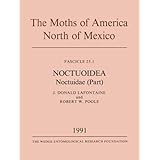
There is no comprehensive published guide to North American moths and the available web resources are rapidly becoming the most useful tool for identifying them. However two relatively recent books focus on different parts of the continent and in different, complementary, ways are likely to make it easier to become familiar with the moth fauna.
The new Peterson Guide (1) only covers the northeastern part of the USA with some adjacent areas in Canada. However it is easily the most accessible and useful way to see how around 1,500 of the most common species in this area appear in life. The plates are all based on photos that have been processed to show similar moths in similar positions and natural postures. Given the fact that most genera in this book include representatives across the whole continent, it would be useful anywhere in the USA or Canada (and much of Mexico too), provided that it is recognised that 1) many species are omitted even for the area covered and 2) the species from each genus that are found in other regions may not be the same ones that are found in the north-east. It is a particularly useful way to locate a likely genus as a starting-point in the Moth Photographers Group galleries. A scan of the images there of the candidate genus and those most closely related (typically a tribe or subfamily) will often quickly lead to an exact match and distribution information.
Moths of Western North America (2) is a very different book, modeled on Moths of Australia above. It is a more technical family-by-family reference and includes 58 excellent plates of pinned specimens representing all families and another 6 plates of live adults and other life stages. For those in this part of the continent, or with a deeper interest in the biology and life histories of different families, it is an excellent resource.
The various volumes of The Moths of America North of Mexico (3)each cover one or more families, subfamilies, tribes or even single genera for the USA and Canada. These are expensive and some older volumes are out of print. The plates in the earlier volumes do not reach the photographic quality that would be normal today. However, for the groups covered, these probably provide the most complete coverage, including genitalia illustrations, except in some of the earliest volumes published.
The older Peterson A Field Guide to Moths of Eastern North America (4) and The Moth Book (5) are out of print and have lower quality images of a smaller number of species than 1 and 2, but may be a useful addition, provided allowance is made for changes in nomenclature and taxonomy. The Moth Book is out of copyright and can be viewed or downloaded in PDF and other formats from the Biodiversity Heritage Library (link below).
1. Beadle, D. and Leckie, S., Peterson Field Guide to Moths of Northeastern North America
2. Powell, J. and Opler, P., Moths of Western North America
3. Wedge Entomological Research Foundation, The Moths of America North of Mexico
4. Covell, C., A Field Guide to Moths of Eastern North America
5. Holland, W.J., The Moth Book
Web resources
1.  2.
2. 
































